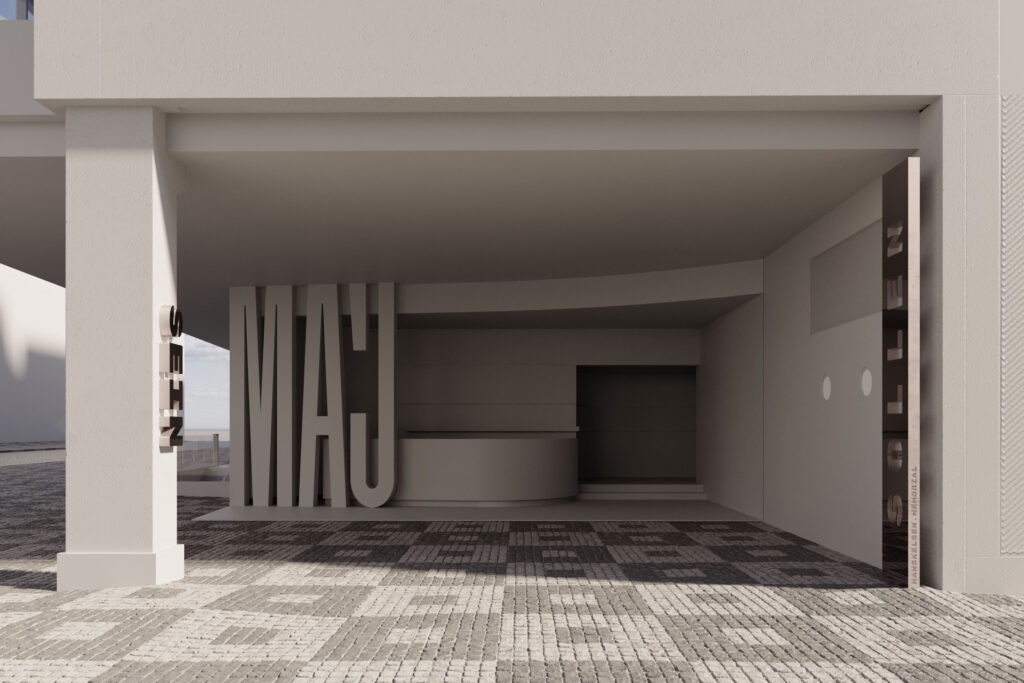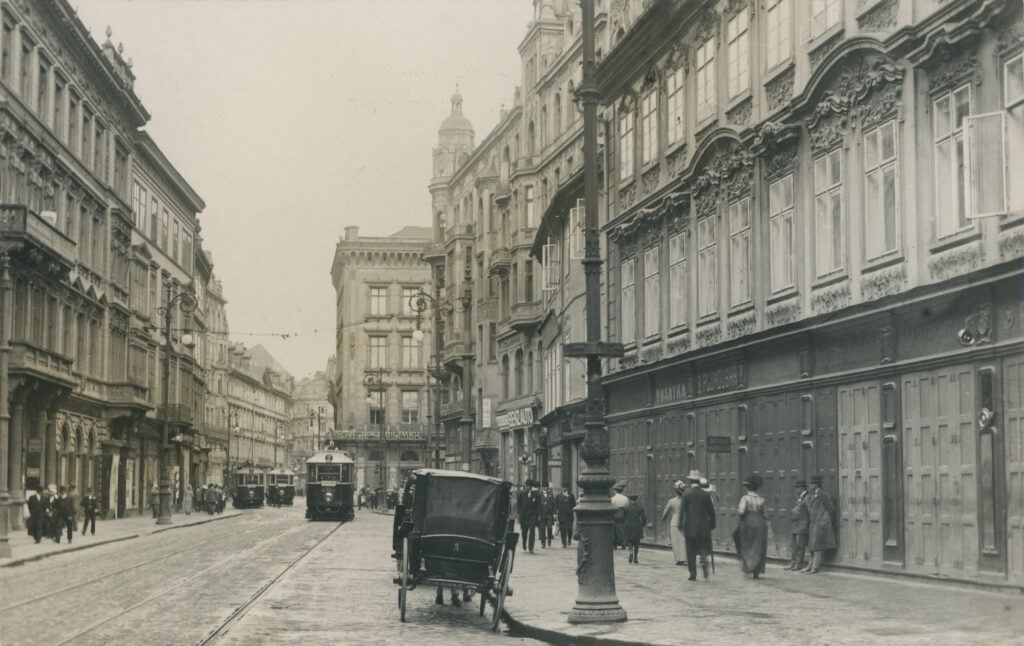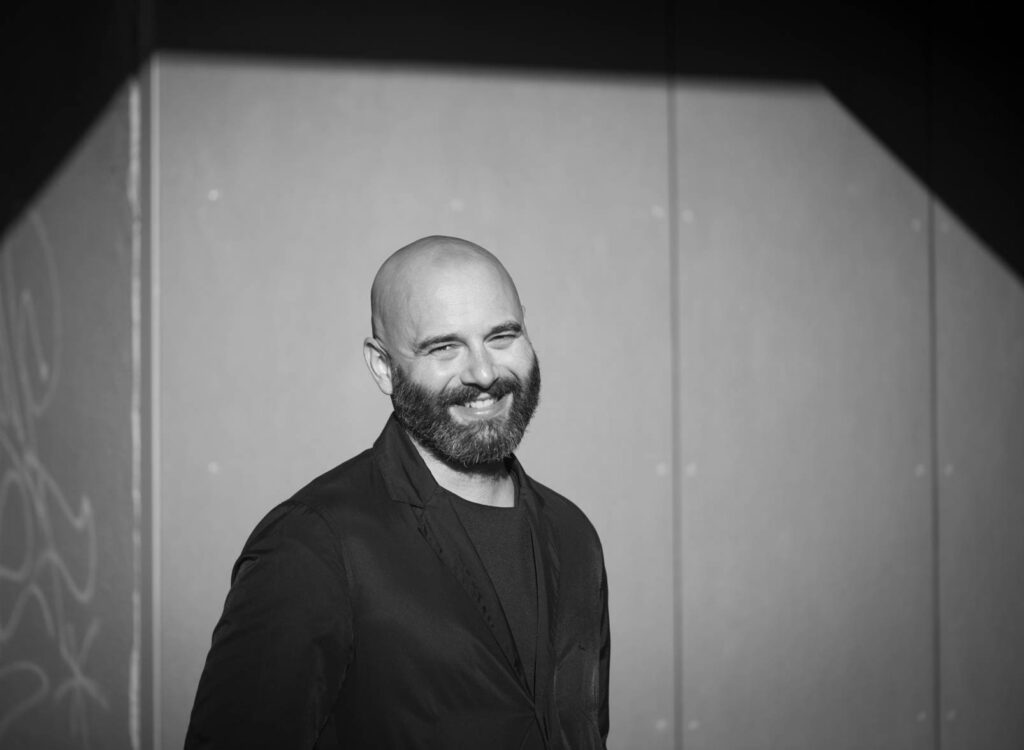
The sculpture, to be placed on the building of the current Máj department store, at the site where Hans Kelsen was born, aims to dignify Kelsen’s memory, draw attention to his work, as well as to the architecturally significant building designed by architects John Eisler, Miroslav Masák, and Martin Rajniš from the Liberec studio SIAL.
For this reason, the format of the sculpture is based on a direct reinterpretation of a part of Kelsen’s work. It uses a visually minimalistic form and rejects the traditionally suggested principle of figurative depiction of a historical figure.
Author of the Sculpture: Petr Dub
Curator of the Realization: Mgr. Petr Agha, LL.M., Ph.D.
Investor: Máj Národní a.s.
Location: 50°4′55.92″ N, 14°25′10.92″ E
Press Kit: [link]
Media Contact: info@petrdub.cz
Hans Kelsen
Hans Kelsen was a prominent Austrian lawyer and philosopher, known primarily for his work in legal theory. He was born in 1881 in Vienna and became famous for his concept of the “pure theory of law.” His work focused on examining the nature of law, mainly through the analysis of normative structures and the relationship between law and the state.
Kelsen’s most famous work, “General Theory of Law and State,” published in 1925, introduced the concept of the basic norm, which became key to understanding the functioning of legal systems. His ideas influenced many lawyers and philosophers worldwide and are still studied and discussed today. Kelsen’s work is crucial for understanding legal theory and he is considered one of the most significant legal thinkers of the 20th century.


Life
October 11, 1881: Hans Kelsen was born to Jewish parents Adolf Kelsen and Auguste Löwy. His siblings were Gertrude, Ernst, and Fritz Paul Kelsen.
1884 – 1930: The family moved to Vienna during Hans’s early childhood, a move that symbolically foreshadowed Kelsen’s future global wanderings, tied to the historical upheavals of the 20th century.
1930 – 1933: Kelsen accepted a professorship at the University of Cologne, but his tenure was short-lived due to the rise of Nazism in Germany.
1933 – 1936: As the Nazis took control of Germany in 1933, Kelsen was dismissed from his professorship and fled to Geneva, Switzerland.
1936 – 1938: Concurrently with his Swiss engagement, Kelsen briefly returned to Prague, serving as a professor at the German University, which was later abolished after World War II.
1938 – 1940: In Geneva, Kelsen taught international law at the Graduate Institute of International Studies before moving to the USA in 1940.
1945 – 1973: In the USA, Kelsen taught at Harvard Law School and later became a full professor at the University of California, Berkeley, where he remained until the end of his life.
April 19, 1973: Hans Kelsen passed away at the age of 92 in Berkeley. His body was cremated and his ashes were scattered into the Pacific Ocean.
About the author
Petr Dub (*1976) completed his doctoral studies at FaVU VUT in Brno in 2012 with an authorial publication titled “Selected Post-Conceptual Approaches in Contemporary Czech Painting.” In his artistic work, he focuses primarily on exploring the capacity of contemporary painting, objects, installations, and their intersections in architecture or public space. His diploma thesis “UNFRAMED” was selected for the European exhibition Start Point and the “TRANSFORMERS” cycle among the finalists for The Sovereign European Art Prize, organized by the Royal Foundation in London under the patronage of Christie’s auction house. He was nominated for the Essl Art Award CEE and included in the Start Up cycle organized by the Gallery of the City of Prague. He is a co-founder of the photographic platform Studio Flusser and served as the chairman of the Skutek Association from 2014-2018, focusing on the issue of the “Percent for Art” policy. Since 2018, he has been leading the Painting IV studio at the Academy of Fine Arts in Prague with Marek Meduna.
More at: www.petrdub.cz


